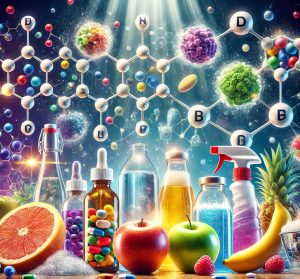Common Diseases in Humans
Human health has always been a critical aspect of our survival, with diseases playing a major role in shaping human societies throughout history. From the time when humans first began to settle in communities, the incidence of infectious and non-infectious diseases has continuously challenged our ability to thrive. In this article, we will explore some of the most common diseases that affect humans, examining their causes, symptoms, treatment, and prevention strategies.
1. Infectious Diseases
Infectious diseases are caused by pathogenic microorganisms, including bacteria, viruses, fungi, and parasites. These diseases can be transmitted from one person to another, either directly or indirectly, and can lead to a variety of symptoms, some mild and others severe.
1.1 Influenza (Flu)
Cause: The flu is caused by the influenza virus, which affects the respiratory system. It is highly contagious and spreads primarily through droplets when an infected person coughs, sneezes, or talks.
Symptoms: Common symptoms include fever, chills, sore throat, body aches, fatigue, and cough. In severe cases, the flu can lead to complications such as pneumonia.
Treatment and Prevention: Antiviral medications like oseltamivir can reduce the severity and duration of flu symptoms, but rest and hydration are key. The flu vaccine is the most effective method of preventing influenza and is recommended annually.
1.2 Tuberculosis (TB)
Cause: Mycobacterium tuberculosis, a bacterium, causes tuberculosis, a disease that primarily affects the lungs but can also affect other organs such as the kidneys, spine, and brain.
Symptoms: Symptoms of TB include persistent cough, chest pain, blood in sputum, fatigue, weight loss, fever, and night sweats.
Treatment and Prevention: TB is treatable with a combination of antibiotics, typically over a course of six months. Preventive measures include vaccination with the BCG vaccine, which is commonly given to children in areas with a high incidence of TB.
1.3 Malaria
Cause: Malaria is caused by Plasmodium parasites, which are transmitted to humans through the bites of infected female Anopheles mosquitoes.
Symptoms: The disease presents with fever, chills, sweating, headache, and fatigue. If untreated, it can cause severe complications such as organ failure or death.
Treatment and Prevention: Malaria is treated with antimalarial drugs, such as chloroquine, artemisinin-based combination therapies, and primaquine. Prevention methods include the use of insecticide-treated bed nets, indoor spraying with insecticides, and antimalarial drugs for high-risk individuals.
1.4 HIV/AIDS
Cause: Human Immunodeficiency Virus (HIV) attacks the immune system, specifically the CD4+ T cells, making the body vulnerable to infections and certain cancers. If left untreated, HIV can progress to Acquired Immunodeficiency Syndrome (AIDS).
Symptoms: In the early stages, HIV may not cause noticeable symptoms, but as the disease progresses, individuals may experience weight loss, recurrent infections, and night sweats.
Treatment and Prevention: There is no cure for HIV, but antiretroviral therapy (ART) can control the virus and prevent it from progressing to AIDS. Preventive measures include safe sex practices, needle exchange programs, and the use of pre-exposure prophylaxis (PrEP).
1.5 Hepatitis
Cause: Hepatitis refers to inflammation of the liver caused by hepatitis viruses (A, B, C, D, and E). Hepatitis A and E are typically transmitted through contaminated food and water, while Hepatitis B and C are transmitted through blood and bodily fluids.
Symptoms: Symptoms include jaundice, fatigue, nausea, vomiting, and abdominal pain. Hepatitis B and C can lead to chronic liver disease, cirrhosis, and liver cancer.
Treatment and Prevention: Hepatitis A and B can be prevented with vaccines. Antiviral medications such as interferon and direct-acting antivirals can manage chronic Hepatitis B and C. Hepatitis C is curable in many cases with modern treatments.
2. Non-Infectious Diseases
Non-infectious diseases are not caused by pathogens and cannot be transmitted from one person to another. These diseases often result from genetic factors, lifestyle choices, environmental exposures, and other non-communicable causes.
2.1 Cardiovascular Diseases
Cause: Cardiovascular diseases (CVD) refer to a group of disorders affecting the heart and blood vessels, such as heart disease, stroke, and hypertension (high blood pressure).
Symptoms: Symptoms can include chest pain, shortness of breath, dizziness, and in some cases, heart attack or stroke.
Treatment and Prevention: CVD is treated through lifestyle modifications (e.g., diet, exercise), medications (e.g., statins, blood pressure medication), and, in severe cases, surgery (e.g., bypass surgery). Preventive measures include reducing risk factors such as smoking, high cholesterol, and high blood pressure.
2.2 Diabetes Mellitus
Cause: Diabetes is a metabolic disorder where the body either cannot produce enough insulin or cannot effectively use the insulin it produces. There are two main types: Type 1 diabetes (an autoimmune disease) and Type 2 diabetes (often linked to obesity and lifestyle factors).
Symptoms: Symptoms include excessive thirst, frequent urination, fatigue, and blurred vision. Long-term complications can lead to kidney failure, neuropathy, and cardiovascular disease.
Treatment and Prevention: Type 1 diabetes requires insulin therapy, while Type 2 diabetes can often be managed with lifestyle changes, including diet, exercise, and oral medications. Insulin injections may be required in some cases of Type 2 diabetes as well.
2.3 Cancer
Cause: Cancer is a group of diseases characterized by uncontrolled cell growth. It can occur in almost any part of the body and can be caused by genetic mutations, environmental factors, or lifestyle choices such as smoking or diet.
Symptoms: Symptoms vary depending on the type of cancer but often include unexplained weight loss, fatigue, pain, and changes in bodily functions.
Treatment and Prevention: Cancer treatment may involve surgery, chemotherapy, radiation therapy, and immunotherapy. Prevention strategies include lifestyle modifications, such as avoiding tobacco, maintaining a healthy diet, and undergoing regular screenings for early detection.
2.4 Chronic Respiratory Diseases
Cause: Chronic respiratory diseases, such as chronic obstructive pulmonary disease (COPD), asthma, and pulmonary fibrosis, are caused by a combination of genetic factors and environmental exposures, particularly smoking and air pollution.
Symptoms: Common symptoms include shortness of breath, chronic cough, wheezing, and frequent respiratory infections.
Treatment and Prevention: Treatment may involve bronchodilators, corticosteroids, and oxygen therapy. Smoking cessation and reducing exposure to environmental pollutants are key preventive measures.
2.5 Mental Health Disorders
Cause: Mental health disorders, including depression, anxiety, schizophrenia, and bipolar disorder, are often caused by a combination of genetic, environmental, and psychological factors.
Symptoms: Symptoms vary widely, but common signs include persistent feelings of sadness, anxiety, disinterest in daily activities, and difficulty concentrating.
Treatment and Prevention: Treatment typically involves psychotherapy, medication (such as antidepressants or antipsychotics), and lifestyle changes. Preventive measures include stress management, social support, and early intervention.
3. Prevention and Management of Diseases
Prevention and early detection play crucial roles in managing both infectious and non-infectious diseases. Preventive strategies may include vaccination, regular health checkups, maintaining a healthy lifestyle, and avoiding risky behaviors. Furthermore, public health initiatives focused on education, sanitation, and access to healthcare services can significantly reduce the burden of many common diseases.
Here are 10 questions and answers related to Common Diseases in Humans:
1. What are infectious diseases?
Answer:
Infectious diseases are illnesses caused by pathogens, including bacteria, viruses, fungi, and parasites, which can spread from person to person or from animals to humans.
Explanation:
These diseases are transmissible and can be spread through direct contact, droplets in the air, contaminated food or water, or vector organisms (e.g., mosquitoes).
2. What are the symptoms of influenza (flu)?
Answer:
The symptoms of influenza include fever, chills, sore throat, body aches, cough, fatigue, and headaches.
Explanation:
Influenza affects the respiratory system and can lead to severe complications like pneumonia, especially in vulnerable populations such as the elderly, children, and those with weakened immune systems.
3. How is tuberculosis (TB) transmitted?
Answer:
Tuberculosis is primarily transmitted through the air when an infected person coughs, sneezes, or talks, releasing tiny droplets containing the bacteria Mycobacterium tuberculosis.
Explanation:
Close contact with an infected person or prolonged exposure in crowded environments increases the risk of transmission. TB usually affects the lungs but can spread to other organs.
4. What are the common causes of diabetes?
Answer:
The primary causes of diabetes are insulin resistance (in Type 2 diabetes) and autoimmune destruction of insulin-producing cells (in Type 1 diabetes). Obesity, poor diet, lack of physical activity, and genetics contribute to Type 2 diabetes.
Explanation:
Type 1 diabetes is typically diagnosed in childhood or adolescence and requires lifelong insulin therapy. Type 2 diabetes is more common in adults and can be managed through lifestyle changes, oral medications, and insulin in advanced stages.
5. How does smoking contribute to chronic respiratory diseases?
Answer:
Smoking damages the lungs and airways, leading to conditions like chronic obstructive pulmonary disease (COPD) and lung cancer. The toxins in tobacco smoke cause inflammation and obstruct airflow in the lungs.
Explanation:
Chronic exposure to smoking weakens lung tissue and the immune system, making individuals more vulnerable to respiratory infections and exacerbating symptoms of asthma and COPD.
6. What is the role of vaccination in preventing diseases?
Answer:
Vaccination is the administration of a vaccine to stimulate the immune system to recognize and fight specific pathogens. It is one of the most effective ways to prevent infectious diseases like measles, influenza, and hepatitis.
Explanation:
Vaccines promote immunity by introducing weakened or inactivated forms of a pathogen into the body, helping the immune system recognize and remember the pathogen, thereby preventing future infections.
7. What are the risk factors for cardiovascular diseases?
Answer:
Risk factors for cardiovascular diseases (CVD) include smoking, high blood pressure, high cholesterol, lack of physical activity, poor diet, obesity, and a family history of heart disease.
Explanation:
These factors can damage the heart and blood vessels, leading to conditions like heart attacks, stroke, and atherosclerosis (hardening of the arteries). Lifestyle changes and medication can manage these risks.
8. What is the treatment for malaria?
Answer:
Malaria is treated with antimalarial drugs such as chloroquine, artemisinin-based combination therapies, and primaquine, depending on the type of malaria and its severity.
Explanation:
Prompt treatment is essential to prevent complications such as organ failure, severe anemia, and death. Preventive measures include the use of insecticide-treated bed nets and indoor spraying of insecticides.
9. How can mental health disorders be managed?
Answer:
Mental health disorders can be managed through therapy (e.g., cognitive-behavioral therapy), medication (e.g., antidepressants, antipsychotics), and lifestyle changes, including stress management and building a support network.
Explanation:
A combination of professional treatment and self-care practices can help individuals manage symptoms and improve their quality of life. Early intervention is crucial for better outcomes.
10. What are the preventive measures for HIV/AIDS?
Answer:
Preventive measures for HIV/AIDS include using condoms during sex, reducing the number of sexual partners, avoiding sharing needles, and taking pre-exposure prophylaxis (PrEP) for high-risk individuals.
Explanation:
HIV is transmitted through blood, semen, vaginal fluids, and breast milk. Safe sex practices, harm reduction programs, and regular HIV testing can reduce the spread of HIV.
These questions and answers cover some of the most common diseases affecting humans, including their causes, symptoms, treatment, and preventive strategies. Understanding these diseases is essential for promoting public health and individual well-being.






